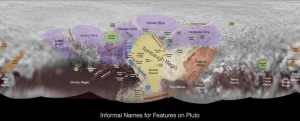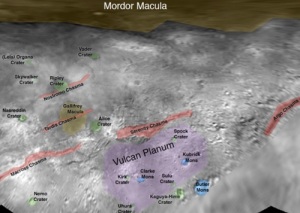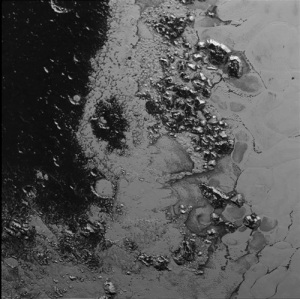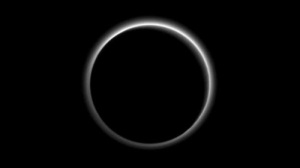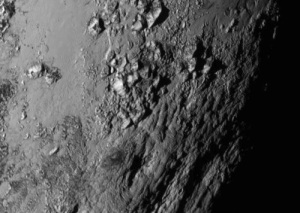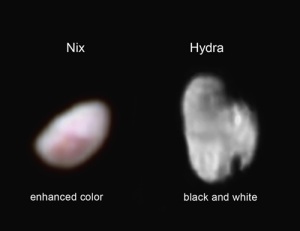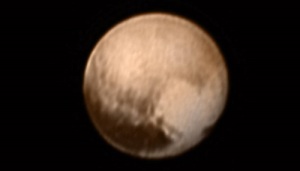The scientists at JPL/NASA have released their first list of informal place names for features on the dwarf planet Pluto and its largest satellite Charon, all courtesy of the New Horizons space probe which passed through the Pluto system two weeks ago. While all of the names so far announced are “informal” (meaning, they are terms that have not been officially suggested and put forward to the IAU Nomenclature Committee), it is highly likely that most – if not all – will eventually become official.
First off, Pluto:
Pluto’s place names are all being drawn from either explorers (who haven’t already been honored with a named object elsewhere in the solar system) or with mythical dieties or lands relating to death or the underworld. And as the previously mentioned Cthulhu Regio indicates, NASA is choosing to use considerable leeway as to choosing appelations they feel are appropriate (note also the inclusion of “Balrog”, from the works of J.R.R. Tolkien).
And now… Charon:
Charon’s names are being drawn almost exclusively from “fantastical myth and literature”, and boy are they taking advantage of the opportunity. Names from the Star Trek, Star Wars, Firefly, Alien, Doctor Who franchises abound. There’s even at least one anime reference (Macross Chasma, after the title ship from Space Fortress Macross/Robotech I), and arguably a second in Argo Chasma (“Argo” was the name used for the title ship Space Cruiser Yamato in its English translation, Star Blazers). The naming scheme on Charon seems to be that space ships get “chasmas” (canyons), fictional characters get craters, and people who actually lived get “mons” (mountains).
As a side note, one of the reasons why I think Argo Chasma is indeed a reference to Space Cruiser Yamato is because in Yamato I, the Yamato actually visits Pluto and even shoots its anchor into “Pluto’s moon” – thereby making it the first media depiction ever of any moon of Pluto (it was also a bit of prescient storytelling, seeing as the episode in question was made in 1974 and Charon wasn’t discovered until 1978).
Keep in mind, these are just the first, initial maps. Most of the data has yet to be downloaded from New Horizons, and there are still whole regions for which any images have yet to be retrieved. So once again, expect more in the coming months.
And don’t be surprised if in the next few weeks there is announced a Setsuna Meioh (Sailor Pluto) crater somewhere on either body…
